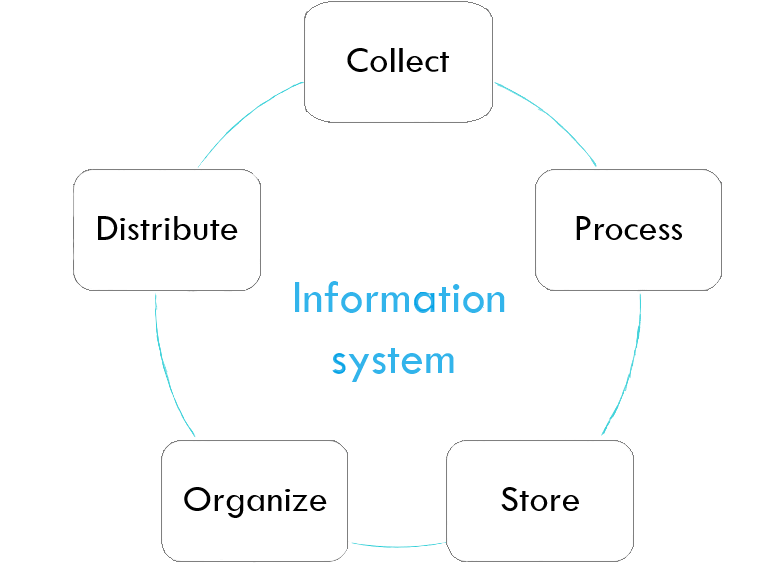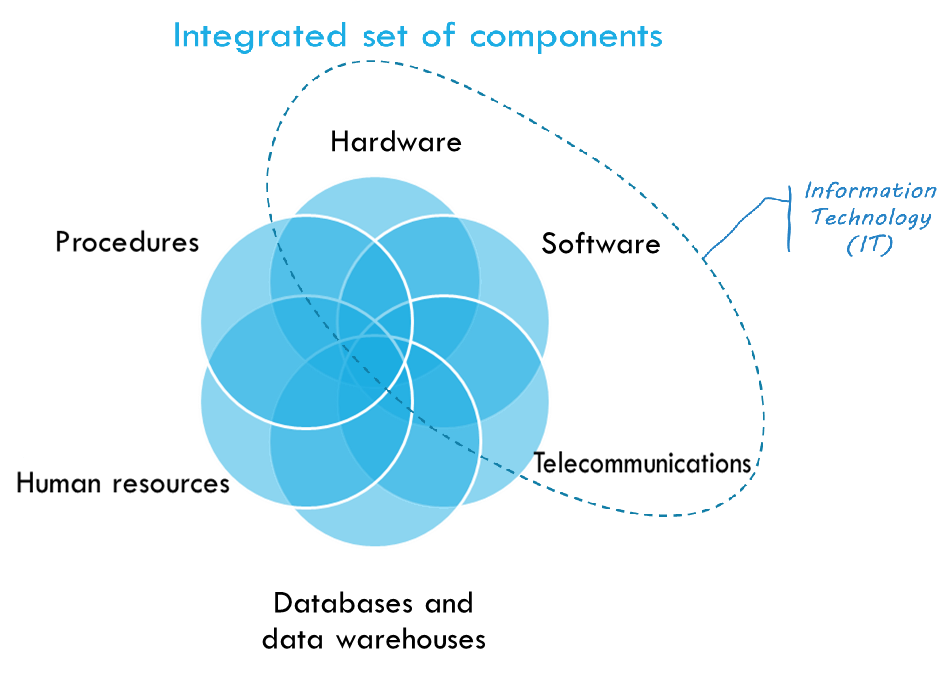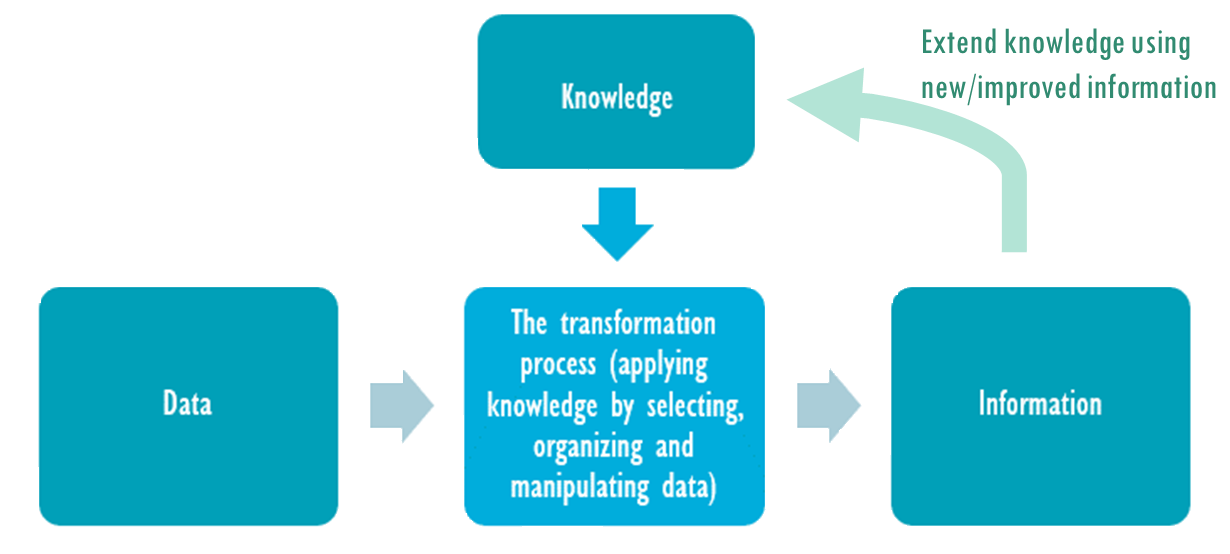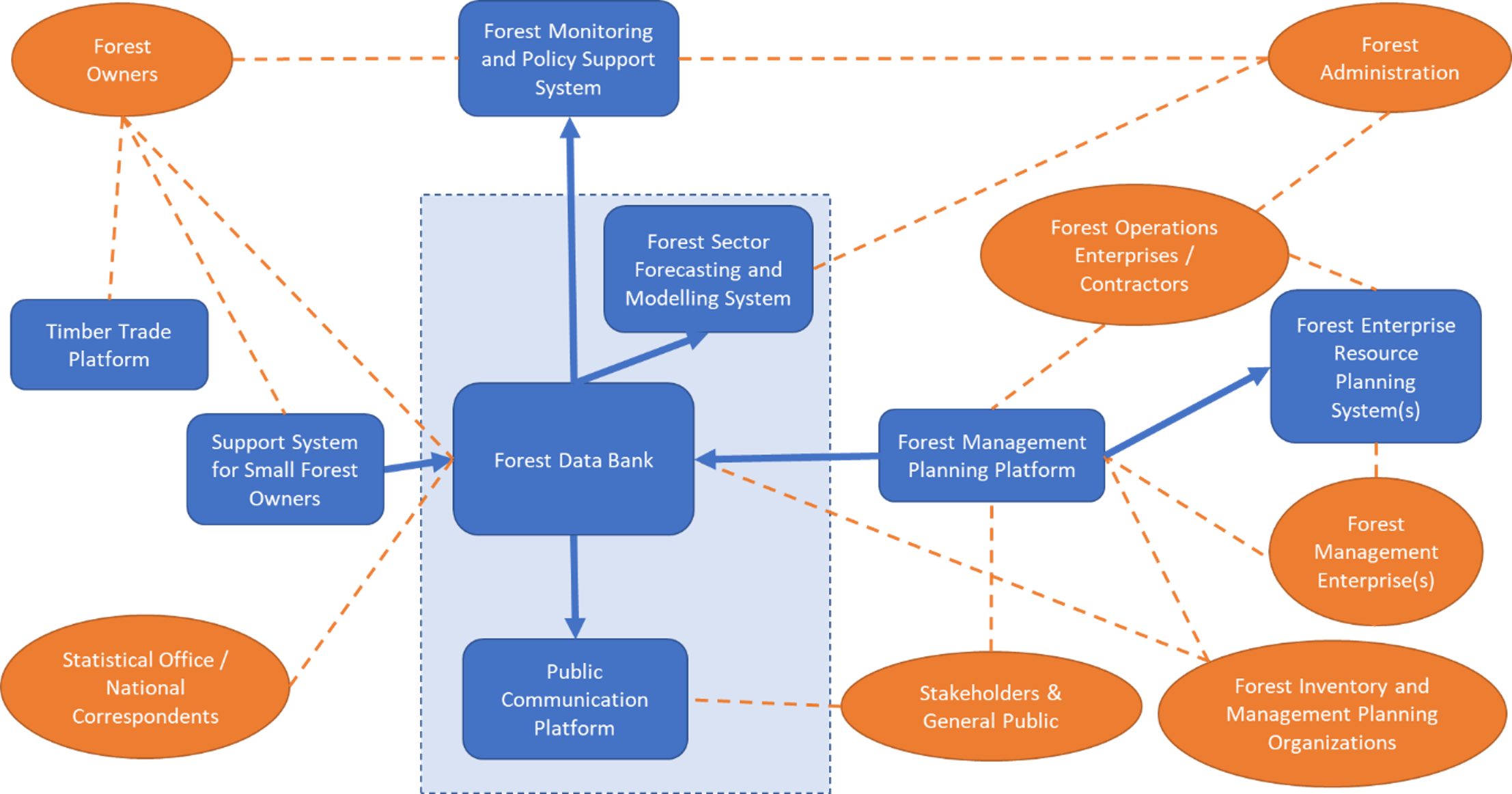Introduction to Forest Information Systems

What are information systems?
This is what information systems are about: collecting, organizing, storing, processing and distributing data.
But this is not really useful per se, the real value of information systems lies in that they can provide information, increase our knowledge and produce digital products which can be used to better understand the reality, to solve practical problems and to act more effectively in the real world.

Technically, an information system is a set of components. Only some of them belong to the domain of technology: hardware, software, telecommunications. They are just a contemporary way of running databases and data warehouses. We should remember, though, that a concept of data warehouse has been with us for many, many centuries, they were just called differently. They were called libraries.
Indispensable components of any information system are also procedures for dealing with information and human resources required to make it possible.

Why do we need information systems?
Information systems should be perceived as a type of social systems, embedded in a wider social and cultural context. In fact, they are systems of communication within the organization and/or the society.Thinking of information systems and information processing, too often we concentrate on the technological aspects because they are perhaps more visible and exciting, but an information system always functions in a certain organizational context and in a wider environment which gives the system its value.

Data is a set of raw real-world facts describing physical objects or events.
Information is a collection of facts organized so that they have additional value.
Knowledge is understanding relationships between data items and how that information can be made useful for a particular task/objective.
The term ‘information’ is often confused and used interchangeably with ‘data’. However, for the sake of clarity we need to make the distinction. Data is a set of raw real-world facts describing physical objects or events, for example: the number of trees, timber volume, work hours, sale value.
When facts are arranged in a meaningful manner, they become information. Information is a collection of facts organized so that they have additional value beyond the value of the individual facts.
For example, data describing individual trees have by itself little practical value. However, when it is enriched with relationships between individual trees (for instance in a single inventory sample plot), informational value of the whole set increases greatly, as it allows to draw conclusions on the whole forest in the plot. If individual plots are further linked together, the whole data set gets even more value as we could infer from it information on the whole forest or even forest resources of the country, by employing statistical methods. It is the ability of the organization to convert data into information that enables efficient and informed decision-making.
The process of defining relationships among data to create useful information requires knowledge which we can define as understanding relationships between data items and how that information can be made useful for a particular task/objective.
Types of information systems
There are many ways to classify information systems, such as by where they are used or what technology they employ. However, the classification based on the purpose they serve is preferable.
Looking from this perspective there are 4 types of information systems:

- Computer programs intended to find and make efficient decisions. DSS process information to provide decision-makers with options, and with information necessary for informed decisions.
- Utility programs for resource accounting and distribution. These are commonly used in business, but political institutions use them to control resources on a continuous basis.
- Programs to arrange the internal structural operations of political institutions and encourage information-exchange within and between public authorities, economic, research and engineering corporations, forest management bodies, private corporations, and other organizations. An ISS platform may contain variable databases with strategically useful information.
- Specialized software for online use, plus web resources providing interactive political processes to increase social engagement, thereby evolving a “network society”. CSS are used to publicize strategic information, monitor political information, and make the law-development process transparent, thereby adding legitimacy.
Information is an indispensable factor in forest policy and management
Coming to our field of expertise which is forestry and forest science, there are several places where information systems have their value. The first is forest policy.
- Forest policy is a complex, multi-disciplinary subject.
- An effective forest policy needs informed decisions about the maintenance, protection and use of forest resources.
- Information technologies help retrieve information, process it, and provide it to political institutions in an optimal way, leading to effective administration of resources.
- It is influenced by forest economics, ownership, management planning and law, climate change, bioenergy, afforestation, biodiversity, rural ecosystem services, land use policy, and infrastructure. Forest policy is strongly related to other sectors and, especially nowadays, to public scrutiny on many levels.
- Forest Information Systems (FIS) aid forest policymaking by gathering forest information to support informed choices, monitoring results, and refining policies.
FIS may also support forest management and operations as a tool to efficiently manage resources and to facilitate communication between stakeholders and with the general public.
Components of Forest information systems
On various levels of forest management there are different actors: forest owners, public forest management bodies and government agencies, forest inventory, planning and monitoring organizations, public statistics, other stakeholders and the general public. Their interests and actions can be supported by information systems.
One must bear in mind that there is no one-fit-for-all schema of information system infrastructure. You may recall what I said before: that the information system is a communication tool and they are always located within an organizational structure and the environment they function. So the scope of information systems, their actual purposes and placement depend very much on the legislation, administrative structure, even political and managerial traditions, the importance of the forest sector, the wealth of the country or organisation etc.

Benefits of having forest information system
We are so much embedded in information technology that benefits of having a forest information system are rather obvious.
Information systems can improve operational efficiency, reduce costs, provide decision-makers with better, more complete, information, and thereby improve forest ecosystem services and state governance.
They can provide the following types of data:
- Custom data for a specific task or decision-making process.
- Custom formats which can be tailored to the needs of their users, for example lists and charts.
- Real-time data - particularly useful when rapid action is needed, like dealing with illegal logging or calamities.
- Data about the past, which are particularly useful for reports, analysis and business planning.
To structure it a bit more, forest information systems can be helpful in several ways.
- Better understanding of the current situation. Information and communication technologies (ICT) knowledge-management systems store data about the current state of a topic and provide tools to help acquire it. Examples of this include forest inventories and monitoring. They can also offer statistical analysis of this data.
- Predicting changes. ICT tools can use existing information to provide predictive statistics, expert-based heuristics, and various modelling approaches.
- Formulating solutions. ICT tools help manage knowledge on why things happen. They can analyse data and help decision-making on various levels: landscape, forest, project/management unit, and forest management planning.
- Implementing solutions. There is evidence that properly used ICT tools increase operational efficiency, for example by automating standard operations. They also improve process quality, promote synergy of actions, and help manage information flow. Therefore, they can optimise costs and improve results.
FIS Study
In 2023-2024, the Forestry and Timber Section of the UNECE is running a capacity-building project to promote forest information systems in the Caucasus and Central Asia, and Eastern Europe. An outcome of this project is the study on forest information systems. The study has a theoretical background on what information systems are why we need them, their main functions, components and benefits. Its second part outlines how to organize and manage the FIS development and how to carry out the actual FIS development.
The current situation in the region concerning FIS was also analysed. Case studies are included on successful implementations of FIS. The project included working with some countries of the region helping them understand their needs and opportunities regarding FIS.
The study focuses as much on technology as on the governance structure, forest management goals, needs and opportunities.